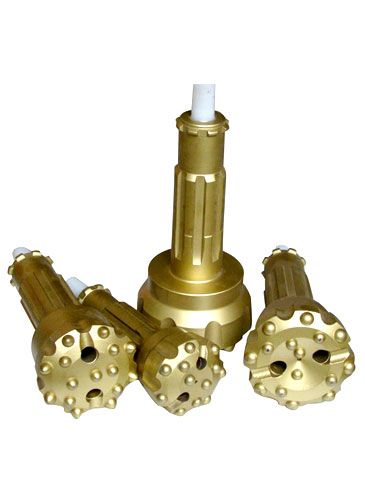Should we choose pointed teeth or ball teeth for down-the-hole drill bits?
With the continuous development of engineering technology, the application scope of down-the-hole drill bits is becoming more and more extensive. However, many people face a problem when choosing DTH drill bits: Should they choose tine teeth or spherical teeth? This article will help readers better choose the DTH drill bit that suits them through a detailed analysis of the characteristics and application scenarios of tine teeth and spherical teeth. drill.
First, let’s take a look at tine down-the-hole drill bits. Pointed down-the-hole drill bits have sharp cutting teeth and are suitable for harder geological conditions, such as rocky formations. The sharp tooth drill bit has strong cutting ability and can quickly break up the formation during drilling and improve drilling efficiency. However, due to the large cutting force of sharp-tooth drill bits, greater drill power and stable drill operation skills are required when using them. Otherwise, the drill pipe may be broken or the drill bit may be worn more severely. In addition, sharp-tooth drill bits also have higher requirements for the working environment. If there are more water sources or the soil is soft, the service life of the sharp-tooth drill bit may be reduced.
In contrast, ball-tooth down-the-hole drill bits are suitable for softer geological conditions, such as mud formations. The cutting teeth of ball tooth drill bits are spherical and are suitable for breaking and cleaning mud formations. The cutting force of ball tooth drill bits is small, relatively stable during use, and has lower requirements for drilling rig power and operation. In addition, the ball tooth drill bit has a relatively long service life and shows good adaptability to mud formations. However, ball-tooth drill bits have relatively weak cleaning capabilities and may take longer to complete the job if hard geological conditions are encountered.
To sum up, the choice of sharp teeth or ball teeth of down-the-hole drill bits needs to be decided according to the specific engineering geological conditions and requirements. For hard geological conditions, pointed down-the-hole drill bits have better cutting capabilities; for softer geological conditions, ball-tooth down-the-hole drill bits are more suitable. When selecting a down-the-hole drill bit, you should also consider the power and stability of the drilling rig, as well as the requirements for the working environment.





